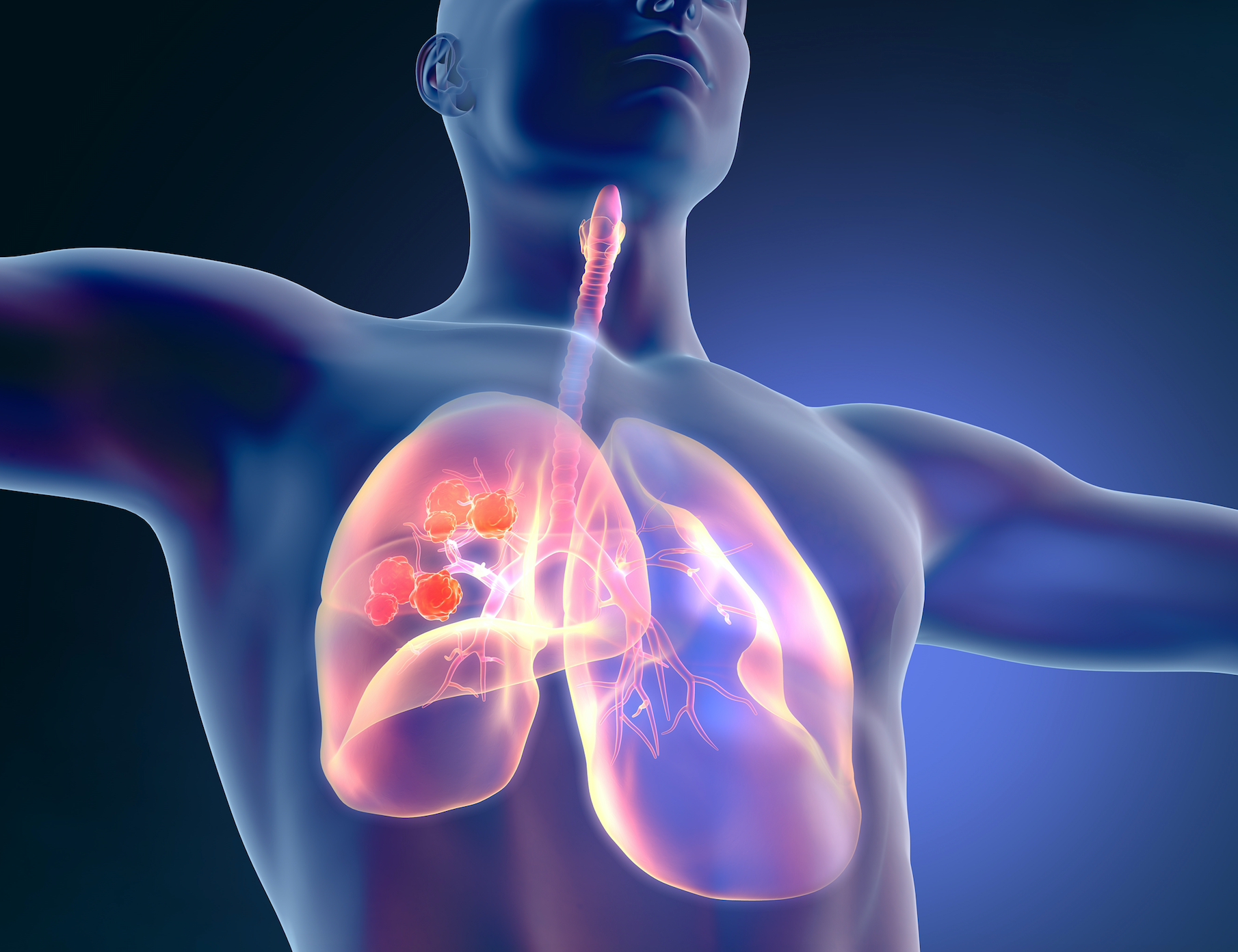Nivolumab/Chemotherapy Improves PCR as Neoadjuvant Treatment of Resectable NSCLC
Neoadjuvant nivolumab added to chemotherapy lead to an improvement in pathological complete responses, compared with chemotherapy alone, as treatment of patients with resectable non-small cell lung cancer.

Neoadjuvant nivolumab (Opdivo) added to chemotherapy lead to an improvement in pathological complete responses (pCR), compared with chemotherapy alone, as treatment of patients with resectable non-small cell lung cancer (NSCLC), according to data from the phase 3 CheckMate-816 trial presented at week 1 of the virtual AACR Annual Meeting 2021.
Moreover, the regimen did not decrease the ability to perform surgery. With this, the CheckMate-816 study (NCT02998528) is the first positive phase 3 trial demonstrating a significant improvement in pathologic response with neoadjuvant immunotherapy plus chemotherapy in resectable NSCLC.
“CheckMate-816 is the first phase 3 trial to show a benefit of neoadjuvant chemotherapy plus chemo and this has the potential to represent a new neoadjuvant treatment option for patients with early-stage, resectable non-small cell lung cancer,” Patrick Forde, MBBCh, associate professor, Sidney Kimmel Comprehensive Cancer Center and Bloomberg Kimmel Institute for Cancer Immunotherapy, Johns Hopkins University, said during a press conference held ahead of the meeting.
In the intent-to-treat (ITT) population, nivolumab plus chemotherapy increased the pCR rate to 24%, compared with 2.2% with chemotherapy alone (odds ratio [OR], 13.94; 99% CI, 3.49-55.75; P < .0001). Among patients with resection, patients treated with the combination regimen demonstrated a pCR rate of 30.5%, compared with 3.2% in patients who received chemotherapy only. Similarly, in patients with a primary tumor only among the ITT population, showed improved pCR with the combination treatment versus chemotherapy alone (25.7% vs 2.8%, respectively). In an exploratory analysis of the ITT population, the pCR rate with nivoumab plus chemotherapy was 20.4% (95% CI, 13.4-29.0).
Moreover, this improvement in pCR was consistent across subgroups, including disease stage (IB/II, 26.2% vs 4.8%, respectively; ≥IIIA, 23.0% vs 0.9%), NSCLC subtype, PD-L1 status (<1%, 16.7% vs 2.6%; ≥1%, 32.6% vs 2.2%), tumor mutational burden status (low, 22.4% vs 1.9%; high, 30.8% vs 2.7%), and gender.
Patients treated with nivolumab plus chemotherapy were also more likely to have circulating tumor DNA clearance (56% vs 34%, respectively), compared with chemotherapy alone, in particular between cycle 1 and cycle 3 of neoadjuvant therapy. “And indeed, those patients who did have ctDNA clearance appear to be more likely to have a pathological complete response at the time of surgery,” Forde added.
In addition, the combination regimen increased the major pathological response rate, defined as 10% or less viable tumor in the lung and lymph nodes, to 36.9%, compared with 8.9% in the chemotherapy alone arm. Pre-surgery objective response rate on imaging in the combination arm was 53.6%, compared with 37.4% in the chemotherapy arm, and radiographic down-staging rates were 30.7%, compared with 23.5%, respectively.
Lastly, 83.2% of patients who received nivolumab in addition to chemotherapy went on to receive definitive surgery, compared with 75.4% of patients in the chemotherapy arm.
Surgery was cancelled due to adverse events (AEs) in 2 patients in each arm (1% each) and due to disease progression in 12 patients (7%) in the combination arm and 17 patients (9%) in the chemotherapy alone arm. Grade 3 to 4 treatment-related AEs occurred in 33.5% vs 36.9%, respectively, and surgery-related AEs in 11.4% vs 14.8%.
“We know that neoadjuvant adjuvant chemotherapy is recommended for patients with resectable non-small cell lung cancer. However, the 5-year overall survival gain is only 5%,” explained Forde, adding that previous phase 2 studies demonstrated that neoadjuvant therapy with nivolumab, either as monotherapy or in combination with chemotherapy, demonstrated encouraging pCR rates.
Therefore, in the randomized, open-label phase 3 CheckMate-816 trial, investigators randomly assigned patients 1:1 to receive treatment with either 360 mg nivolumab every 3 weeks plus platinum-doublet chemotherapy (n = 179) every 3 weeks for 3 cycles or chemotherapy alone (n = 179) every 3 weeks for 3 cycles. Both regimens were followed by surgery within 6 weeks after treatment.
The primary end points were pCR, defined as no residual viable tumor in both the resected lung specimen and the sampled lymph nodes after surgery, by blinded independent pathological review (BIPR) and event-free survival (EFS) by blinded independent central review (BICR). Overall survival, major pathological response per BIPR, and time to death or distant metastases served as secondary end points. Key exploratory endpoints were objective response rate per BICR, and potential predictive biomarkers including PD-L1 and tumor mutational burden.
To be eligible, patients had to have clinical stage IB (≥ 4 cm) to IIIA resectable NSCLC, ECOG PS 0-1, and no known EGFR/ALK alterations.
Forde noted that the study continues to mature for data from the EFS co-primary end point.
Reference:
Forde PM, Spicer J, Lu S, et al. Nivolumab (NIVO) + platinum-doublet chemotherapy (chemo) vs chemo as neoadjuvant treatment (tx) for resectable (IB-IIIA) non-small cell lung cancer (NSCLC) in the phase 3 CheckMate 816 trial. Presented at: AACR Annual Meeting; April 10-15, 2021; Virtual. Abstract CT003.